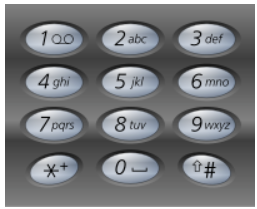
Description
Given a string containing digits from 2-9 inclusive, return all possible letter combinations that the number could represent.
A mapping of digit to letters (just like on the telephone buttons) is given below. Note that 1 does not map to any letters.

Example:
Input: "23"
Output: ["ad", "ae", "af", "bd", "be", "bf", "cd", "ce", "cf"].
Note:
Although the above answer is in lexicographical order, your answer could be in any order you want.
思路
for x N : 不明智 -> X
所以 遞迴 (感覺還可以再找找其他非遞迴的) <-- 總覺得遞迴不好想
Start : 第一個數字開始
傳進 dfs 那傳哪些參數呢 :
dfs 兩件事
Note :
正解
MAP = {}
MAP[0] = ""
MAP[1] = ""
MAP[2] = "abc"
MAP[3] = "def"
MAP[4] = "ghi"
MAP[5] = "jkl"
MAP[6] = "mno"
MAP[7] = "pqrs"
MAP[8] = "tuv"
MAP[9] = "wxyz"
#rlist = []
class Solution:
def dfs(self,digits: str,index: int,tmp:str,rlist:[])-> List[str]:
global MAP
if index == len(digits):
rlist.append(tmp)
print(rlist)
return rlist
mValue = MAP[int(digits[index])]
for i in range(len(mValue)):
tmpc = mValue[i]
tmp+=tmpc
self.dfs(digits,index+1,tmp,rlist)
tmp = tmp[:len(tmp)-1]
#print("call me maybe")
#print(rlist)
#return rlist
def letterCombinations(self, digits: str) -> List[str]:
# call dfs()
# pass
# digits = "hello"
#global rlist
index = 0
tmp = ""
rlist = []
if len(digits)==0:
return []
self.dfs(digits,index,tmp,rlist)
print("checkit"+str(rlist))
return rlist
Result
